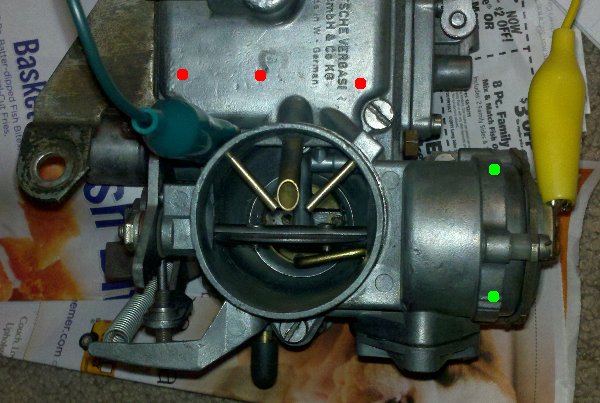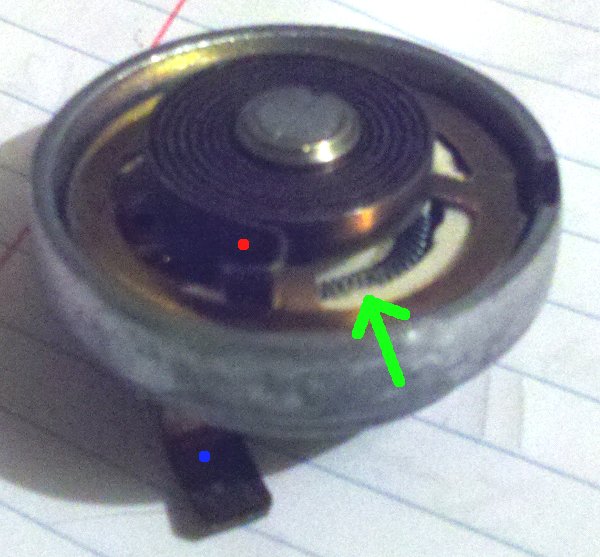And now an excuse for some pretty pictures.
For those who don't know the specifics, a carburetor is a fuel metering device. In a carbureted car, the air coming into the engine goes through the carburetor before going to the cylinders. The carburetor mixes fuel mist into the air stream so that the air/fuel mixture that arrives in the cylinders has the proper ratio to burn and drive the engine. Carburetors are sort of complicated in their design because they must provide a proper fuel/air mixture over a wide range of temperatures, engine speeds, throttle settings, and other parameters.
Modern cars put fuel into the air with fuel injection systems, which decide how much fuel is appropriate for each situation using an electronic look-up table. However, a carburetor does this by mechanical parts that change their behavior depending on the conditions.
One behavior in particular that engines have is that when the engine itself is cold, fuel going into the engine tends to condense on the inside of the intake manifold, which means some of it doesn't get to the cylinders. This causes a "lean" running condition (not enough fuel per volume of air) and the engine doesn't run as well. Carburetors typically compensate for this using what's called a "choke". It's a flapper valve at the entrance to the carburetor. When closed, it restricts the air flow going through the main part of the carburetor. It doesn't actuall "block" air from going through, but it does create suction in the middle part of the carburetor so that more fuel is sucked into the air stream.
Here are a few photos of what we're talking about. Here's a few down
the throat of a 34PICT-4 carb.

Up on the photo is toward the front of
the car, right is to the right. The forward (top of picture) part of
the carb is the fuel bowl; it's marked with red dots on this photo.
The thing on the right marked by green dots is the part that controls
the choke; we'll talk about that in a bit.
This air passage that goes from top top bottom in the carburetor;
we're looking down from above.

Closest to us is the choke, shown here completely open; the shaft is
marked with blue dots. Farther down the throat is the venturi (green
dots), which is a restriction that causes air flow to drop in pressure
and suck air out of the fuel nozzle, which is marked with red dots.
At the bottom of the carburetor, farthest away from us, is the
throttle, which controls how much fuel/air goes into the engine
(that's connected to the accelerator pedal). The throttle shaft is
marked with yellow dots.
Here's the same view, showing the choke closed.

One question is how is the choke controlled. Well some vehicle/carburetor combinations have a manual choke; there's a control that opens and closes it. You'll see manual chokes on things like chain saws or small gardnen equipment with gas engines, or early carbureted cars. After the 1950s or 60s, most cars had an automatic choke of some sort. It would start with the choke mostly closed, and then open it slowly. The carburetors in air-cooled VW engines used a thermo-electric choke.
Here's the electric choke element from a 34PICT series carburetor

The middle of the choke element is a bi-metallic spring. When cold,
the spring holds the choke closed. When the spring heats up, it
slowly opens the choke over a period of a bit over two minutes. The
spring hooks the end of the choke control arm right where it's marked
with a red dot.
The bi-metallic spring in this carburetor doesn't respond directly to the heat of the engine. It's heated by an electric heater element, indicated by the green arrow in the above photo. When you turn the ignition key to "on", battery voltage is delivered to the heater element through the tang on the outside of the choke element (marked by a blue dot). So the thermo-electric choke basically acts as a timer, opening the choke steadily.